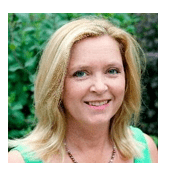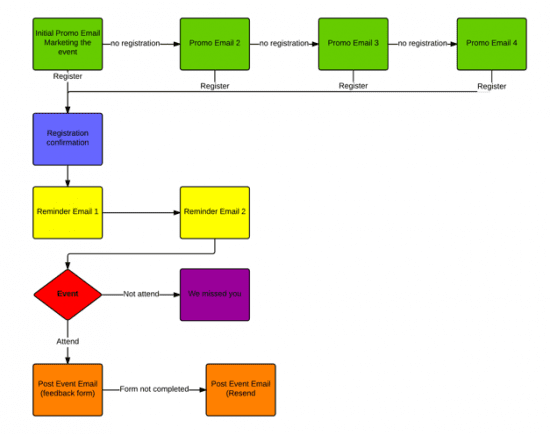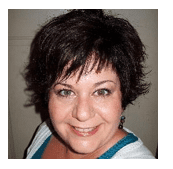Get those seats filled with these many and varied tips from 10 Email marketing experts
Whether virtual or physical, events are a mainstay of marketing to engage new prospects and build relationships with existing contacts.
When you’re responsible for marketing an event it might be something you only do a handful of times a year, so I’ve rounded up some tips from seasoned experts on how to use email to ensure you pack out your event. Read on to find out what you should say and how often to say it.
Once you’ve read the advice below, continue on to the examples of event invite emails and why they work for everything else you need to get your event promotional campaign organised.
 For webinars, send a stand-alone email! We used to send newsletters with webinar registration links inside, but have found that sending dedicated emails for each webinar results in many more registrations.
For webinars, send a stand-alone email! We used to send newsletters with webinar registration links inside, but have found that sending dedicated emails for each webinar results in many more registrations.
We also state very clearly in the email that you should sign up even if you can't attend, since we record all webinars and email all registrants a link to the recording. This means we have lower attendance numbers compared to registrations, but more engaged customers viewing our content in the end.
For in-person events, use location data to your advantage. We increased open rates by 209% by sending regionalized emails to subscribers. While promoting The Email Design Conference 2013, we sent segmented emails to subscribers in three locations—San Francisco, London, and Boston. By looking at the regions where subscribers opened our previous communications, we were able to target emails specifically for each event. These targeted emails saw a 68% open rate—while the general email saw about a 22% open rate—and directly resulted in 58 tickets being sold.
 Get the event title right! The title is like a subject line and needs to be carefully crafted to not only get the audience's attention but to also ensure the WIIFM (what’s in it for me) factor is very clear.
Get the event title right! The title is like a subject line and needs to be carefully crafted to not only get the audience's attention but to also ensure the WIIFM (what’s in it for me) factor is very clear.
My second tip is to organise an automated event flow which covers the marketing of the event, the pre-event information and reminders and post-event information and thank you. All of this is kicked off by the initial marketing email promoting the event and from then on its automated, and goes to the relevant recipients according to their actions. A basic example of such an event flow is seen below. Of course this can be as simple or as complex as you like.

 It's important to email the right segments for the event, otherwise there is risk in increasing unsubscribes and causing general annoyance, which is never a good thing. Presuming that this part is well taken care of then send a series of emails.
It's important to email the right segments for the event, otherwise there is risk in increasing unsubscribes and causing general annoyance, which is never a good thing. Presuming that this part is well taken care of then send a series of emails.
The key, and the secret ingredient, is creating anticipation of the event. Depending on the event, the first may be a 'watch your inbox for an exciting announcement' variety. This would be followed up with the 'big reveal'. A final would be of the 'last chance" variety. A discount at the witching hour is an extra bonus to spike up enrolment too.
 The number one email marketing tip for promoting a webinar or paid physical event is maximise email frequency. There are different ways to sensibly do this.
The number one email marketing tip for promoting a webinar or paid physical event is maximise email frequency. There are different ways to sensibly do this.
- In the context of building up to an event, people get (and tolerate) you will want to email more in order to build anticipation and get bums on seats, so playing with upping frequency definitely worth exploring.
- Put together a series of emails with different content addressing different benefits and aspects of the event; featuring a speaker (with links to their blog/video of them speaking elsewhere), X takeaways you’ll get from session Z, what people said about last year’s event (real quotes), 5 reasons your boss should want you to attend, speaker Y gives us a sneak preview of what they’ll be talking about etc. Each of these can be a separate email and will still give the nudge, rather than repeating the slightly desperate ‘It’s not too late to book’ message over and over again.
- Use social proof to nudge your audience. Change the subject line from things like ‘Don’t forget the early bird discount’ to ‘Join 1560 sustainability professionals at our world development conference’. Very specific numbers give credibility and in this case the message builds the fear of missing out.
- Play on the benefits for business AND individual. This could mean for business things like stay ahead of the curve, don’t get left behind but for the individual the message is boost your skills, learn from the best.
- And finally, use multi-element subject lines to cram in more info about the event into every mail, for example “Join 34000 digital marketers at event x | Expert speakers include a b c | Book today for early bird discount”.
 The biggest opportunity around events is to address the journeys that happen (1) during consideration, (2) post-conversion but pre-event, (3) during the event, and (4) post-event. A person on each of those journeys has different needs at different points, and there are great opportunities to use personalization, dynamic content, and triggered emails to address those needs and drive the desired behaviour.
The biggest opportunity around events is to address the journeys that happen (1) during consideration, (2) post-conversion but pre-event, (3) during the event, and (4) post-event. A person on each of those journeys has different needs at different points, and there are great opportunities to use personalization, dynamic content, and triggered emails to address those needs and drive the desired behaviour.
 Email marketers tend to spend too much time worrying that they are 'bothering' or 'spamming' their recipients but then we leave the office and behave completely differently with our friends.
Email marketers tend to spend too much time worrying that they are 'bothering' or 'spamming' their recipients but then we leave the office and behave completely differently with our friends.
As an email marketer we will send out an email inviting somebody to an event if an email goes unopened or unclicked that is where the communications end because we are afraid of causing offense. If you invited a friend over for dinner and they didn’t respond you would follow up either with another email or you might change up the channel. Don’t be afraid to ask someone to your event more than once.
The reality is that your event probably was not the most important thing on their mind if the recipient even saw it. They will appreciate the follow-up. You could even take it further and put three different calls to action in your event emails: yes I would like to attend, I am not interested in this topic but invite me to other events, I don’t attend events, please don’t bother inviting me in future. Just make sure that last one is worded such that you do not inadvertently unsubscribe them from all future email communications.
 Send a follow up email if they haven’t registered, using an email series works well; early bird, introduce the speakers, offer, follow up, last chance. But even if they have registered, no-shows are a pain, so send a reminder the day before a live event, possibly to print their ticket. Consider adding a no-show fee even if your physical event is free, to give people a real reason to not cancel last minute.
Send a follow up email if they haven’t registered, using an email series works well; early bird, introduce the speakers, offer, follow up, last chance. But even if they have registered, no-shows are a pain, so send a reminder the day before a live event, possibly to print their ticket. Consider adding a no-show fee even if your physical event is free, to give people a real reason to not cancel last minute.
 Webinars are typically free and there are a lot of them, so it it's all down to the 'I MUST know this' or 'I'd like to listen to THEM' value you can show in those first few words in the subject and then leading into copy to make it realistic.
Webinars are typically free and there are a lot of them, so it it's all down to the 'I MUST know this' or 'I'd like to listen to THEM' value you can show in those first few words in the subject and then leading into copy to make it realistic.
Of course, you won’t convert someone to a paid physical event in a single communication, so it's about being relentless in smart way. So, Sense and Respond! Look at engagement of individuals across emails, i.e. look at who has clicked through to the event page and browsed around, lead score and then follow-up by an email to show more or dare-I-say-it, phone!
Parry Malm, President at Howling Mad

I've sent out thousands of event invitations over the years. In college I ran a bunch of semi-legal poker tournaments... and email worked. Then I ran marketing teams for a bunch of global conferences and exhibitions... and email worked. Now I have a birthday party once a year, and no one comes. But that's beside the point, it's not email's fault.
What I've learned about event invitations via email is simple: the more you talk about event features, the less it works as a response channel.
Every event has a bunch of features that those who run the event are mega proud of. A great keynote speaker, an amazing headline band, whatever. But that's not what gets 'bums in seats.' That's simply a grandiose expression of pride in one's work, which is laudable but not purchase driving. It's simply not something customers respond to (source: Marketing 101: Features vs Benefits.)
Case study: last Autumn I helped a local London death punk band promote themselves for a tour of Sweden. We tried a few things - announcing concert dates and new singles and the like. That didn't do much. Tickets weren't exactly flying off the shelves.
What did work was explaining the experience of the impending shows - and big thanks to Google Translate for making it happen in Swedish - it was something like 'Hate. Pestilence. Drugs. Volume. Broken. Death. Noise. The hellfire is coming and Sweden can't stop it.' Maybe it wasn't your mother's garden party, but we understood our audience. And it showed.
Every gig was sold out. And, as it turns out, Sweden couldn't stop it. They love a bit of amphetamine-fuelled leather n denim sh*tstorming.
My point? Events are about experience, not about organisers bragging about how great the event is. Focus on the experience and you'll win.
And please, please, please, stop saying 'early bird.' The worm is dead, deader than a guttural junk rock band from north London.
Ps - the band is called Generation Graveyard. Check them out... if you dare.
 Thank you to all the experts for their contributions, there is a clear common theme, if at first you don’t succeed, keep trying. The number one mistake is to be too shy in promoting the event; one email is not going to pack it out.
Thank you to all the experts for their contributions, there is a clear common theme, if at first you don’t succeed, keep trying. The number one mistake is to be too shy in promoting the event; one email is not going to pack it out.
Finally remember to plan for and make use of the content generated by the event afterwards. Re-purpose and re-use the content.
Not only offering downloads of event recordings but take out key information, create a series of blog posts, emails and re-package into whitepapers or guides that can be offered as downloads too.
Now with all that great advice you next need to work on the invitation emails. For examples of real event invitation emails and what makes them great take a look at this post on irresistible event invitation templates.



 For webinars, send a stand-alone email! We used to send newsletters with webinar registration links inside, but have found that sending dedicated emails for each webinar results in many more registrations.
For webinars, send a stand-alone email! We used to send newsletters with webinar registration links inside, but have found that sending dedicated emails for each webinar results in many more registrations. Get the event title right! The title is like a subject line and needs to be carefully crafted to not only get the audience's attention but to also ensure the WIIFM (what’s in it for me) factor is very clear.
Get the event title right! The title is like a subject line and needs to be carefully crafted to not only get the audience's attention but to also ensure the WIIFM (what’s in it for me) factor is very clear.
 It's important to email the right segments for the event, otherwise there is risk in increasing unsubscribes and causing general annoyance, which is never a good thing. Presuming that this part is well taken care of then send a series of emails.
It's important to email the right segments for the event, otherwise there is risk in increasing unsubscribes and causing general annoyance, which is never a good thing. Presuming that this part is well taken care of then send a series of emails. The number one email marketing tip for promoting a webinar or paid physical event is maximise email frequency. There are different ways to sensibly do this.
The number one email marketing tip for promoting a webinar or paid physical event is maximise email frequency. There are different ways to sensibly do this. The biggest opportunity around events is to address the journeys that happen (1) during consideration, (2) post-conversion but pre-event, (3) during the event, and (4) post-event. A person on each of those journeys has different needs at different points, and there are great opportunities to use personalization, dynamic content, and triggered emails to address those needs and drive the desired behaviour.
The biggest opportunity around events is to address the journeys that happen (1) during consideration, (2) post-conversion but pre-event, (3) during the event, and (4) post-event. A person on each of those journeys has different needs at different points, and there are great opportunities to use personalization, dynamic content, and triggered emails to address those needs and drive the desired behaviour. Email marketers tend to spend too much time worrying that they are 'bothering' or 'spamming' their recipients but then we leave the office and behave completely differently with our friends.
Email marketers tend to spend too much time worrying that they are 'bothering' or 'spamming' their recipients but then we leave the office and behave completely differently with our friends. Send a follow up email if they haven’t registered, using an email series works well; early bird, introduce the speakers, offer, follow up, last chance. But even if they have registered, no-shows are a pain, so send a reminder the day before a live event, possibly to print their ticket. Consider adding a no-show fee even if your physical event is free, to give people a real reason to not cancel last minute.
Send a follow up email if they haven’t registered, using an email series works well; early bird, introduce the speakers, offer, follow up, last chance. But even if they have registered, no-shows are a pain, so send a reminder the day before a live event, possibly to print their ticket. Consider adding a no-show fee even if your physical event is free, to give people a real reason to not cancel last minute. Webinars are typically free and there are a lot of them, so it it's all down to the 'I MUST know this' or 'I'd like to listen to THEM' value you can show in those first few words in the subject and then leading into copy to make it realistic.
Webinars are typically free and there are a lot of them, so it it's all down to the 'I MUST know this' or 'I'd like to listen to THEM' value you can show in those first few words in the subject and then leading into copy to make it realistic.
 Thank you to all the experts for their contributions, there is a clear common theme, if at first you don’t succeed, keep trying. The number one mistake is to be too shy in promoting the event; one email is not going to pack it out.
Thank you to all the experts for their contributions, there is a clear common theme, if at first you don’t succeed, keep trying. The number one mistake is to be too shy in promoting the event; one email is not going to pack it out.



